Rapid rotting of deck boards can be attributed to a combination of factors, primarily moisture exposure, inadequate sealing, and subpar material choice. Consistent contact with water, especially if the wood is not properly treated or sealed, accelerates decay, allowing fungi and bacteria to break down the fibers. To ensure longevity, select rot-resistant woods and employ routine maintenance practices like sealing and regular inspections.
Homeowners take pride in their decks, but the unsettling discovery of premature rot can be alarming. Numerous factors, from environmental elements to construction oversights, contribute to this early decay. Let’s explore what might be undermining your deck’s longevity.

The Importance of Proper Sealing
Your deck is more than just wood; it’s an investment and a place of memories. Yet, without proper protection, even the sturdiest decks can fall prey to external threats. The solution? Sealing.
- Protective Barriers: Sealing provides a shield against moisture, pests, and other external factors that can damage your deck.
- Types of Sealants: From water-repellent variants to those designed to combat UV rays, there’s a sealant tailored for every deck’s need.
- Re-sealing Frequency: To keep your deck in optimal condition, understand when and how often to reapply sealants, ensuring longevity and vibrance.
Sealing isn’t just a task; it’s a commitment to preserving the life of your deck. By understanding its importance and acting on it, you guarantee countless more barbecues, sunsets, and memories in your cherished outdoor space.
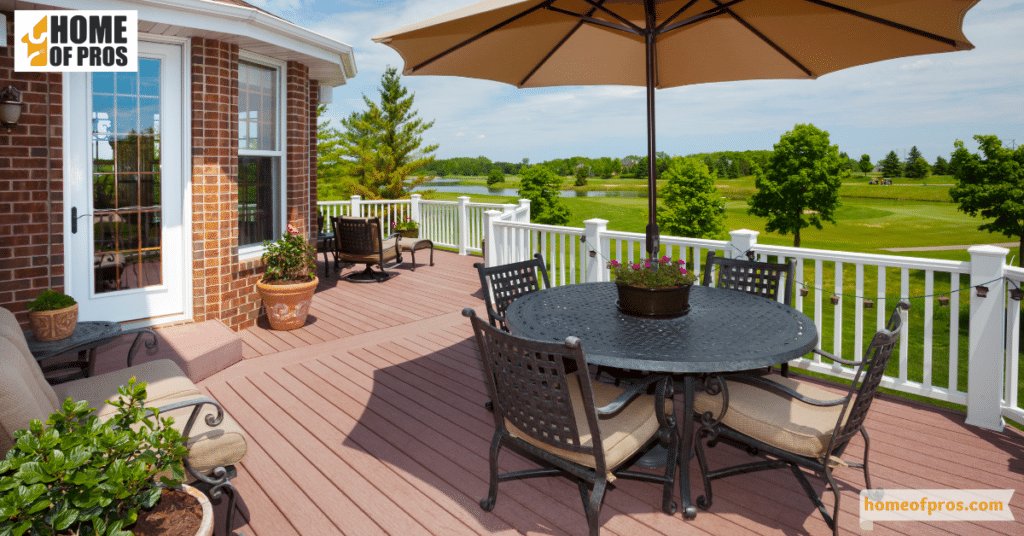
Materials Matter: Choosing Rot-Resistant Woods
Every deck starts with a choice: which wood to use? Beyond aesthetics, the longevity of your deck largely hinges on this decision, with rot resistance playing a crucial role.
- Common Decking Woods and Rot-Resistance Levels:
- Pressure-Treated Pine: Popular and budget-friendly, but may require more maintenance compared to naturally rot-resistant woods.
- Cedar: Naturally resistant to decay, with a beautiful reddish hue, making it both functional and aesthetic.
- Redwood: Stronger and more rot-resistant than cedar, with a vibrant color that can enhance any outdoor space.
- Tropical Hardwoods (like Ipe or Teak): Extremely dense and naturally resistant to rot and insects, but can be on the pricier side.
- Investing in Rot-Resistant Woods:
- Longevity: These woods, especially cedar, redwood, and tropical hardwoods, significantly outlast their less-resistant counterparts, making them cost-effective in the long run.
- Maintenance: Naturally rot-resistant woods often require less maintenance, saving time and money on upkeep.
- Aesthetics: Beyond their functional benefits, these woods often boast rich colors and grains, adding a touch of luxury to your outdoor space.
While the initial investment might be higher with rot-resistant woods, the long-term benefits of durability, reduced maintenance, and undeniable beauty make them a wise choice for any homeowner looking to build a lasting deck.
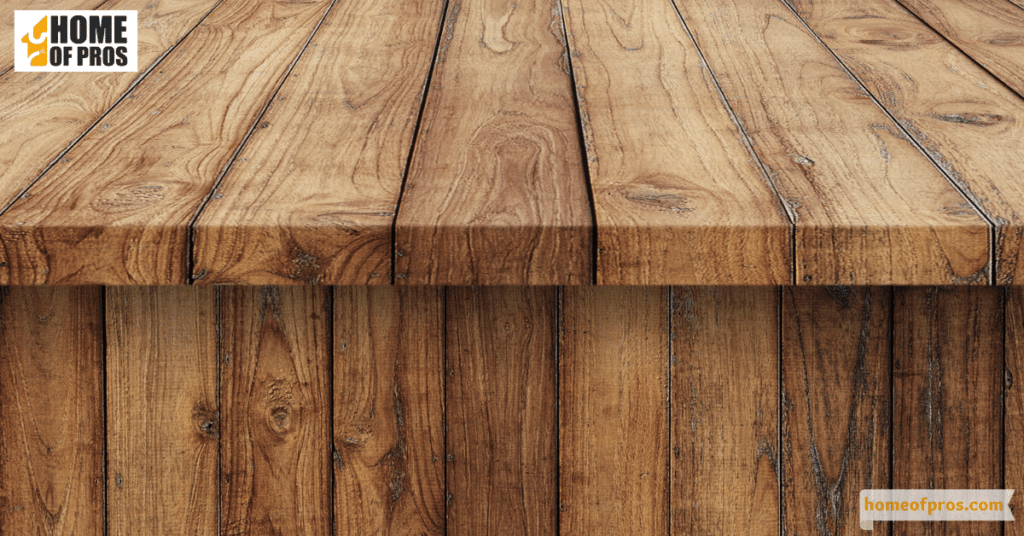
Construction Errors: Overlooked Culprits of Rapid Rot
A deck stands as a testament to outdoor leisure, bonding, and aesthetic appeal. Yet, beneath its beauty, the nuances of its construction can be the difference between a lasting structure and a fleeting one. Regrettably, some foundational missteps, often overlooked, can become a deck’s undoing.
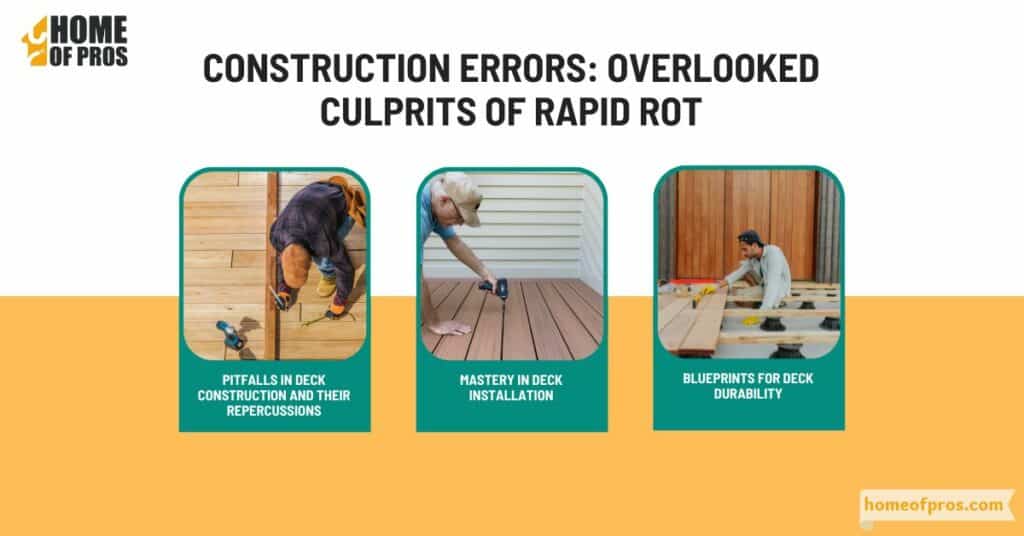
1. Pitfalls in Deck Construction and Their Repercussions
Deck longevity can be compromised by several factors. Insufficient board spacing restricts ventilation, promoting moisture and rot. Inadequate drainage leads to water stagnation and hastening decay. Furthermore, using inappropriate fasteners, such as non-galvanized ones, risks rust and structural instability.
2. Mastery in Deck Installation
It’s crucial to always follow the manufacturer’s specifications, ensuring that each plank and nail is meticulously placed in alignment with industry best practices. Equally vital is understanding the importance of ventilation. A deck’s ability to breathe, particularly those situated closer to the ground, plays a pivotal role in ensuring its long-lasting durability.
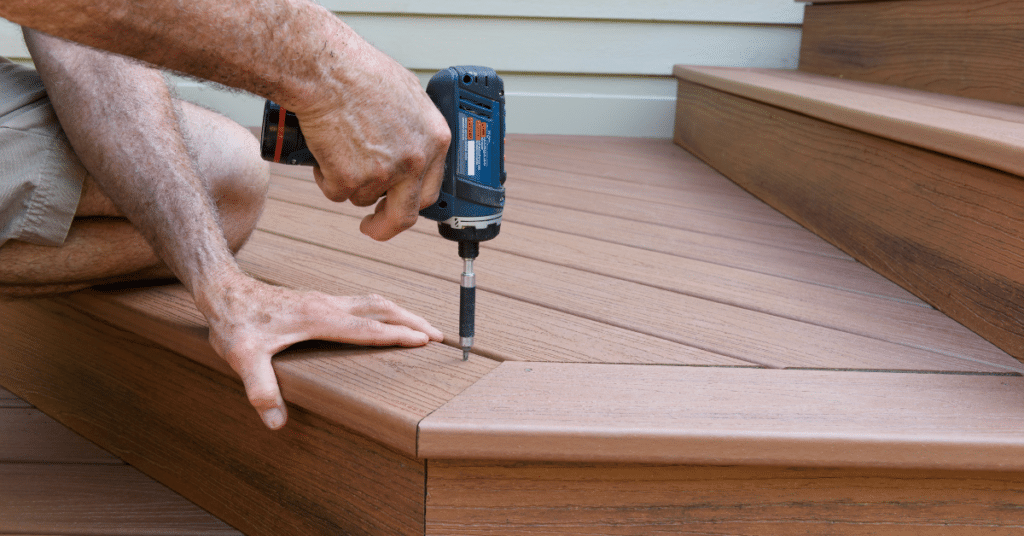
3. Blueprints for Deck Durability
Leveraging the insights of seasoned deck builders is pivotal, especially when uncertainties arise. Emphasizing excellence in every phase of construction, from the choice of materials to the selection of accessories, can significantly enhance the longevity of your deck.
The allure of a newly minted deck is potent, but its longevity hinges on the precision of its birth. By sidestepping construction traps and championing industry best practices, you’re not just building a deck—you’re crafting a legacy.
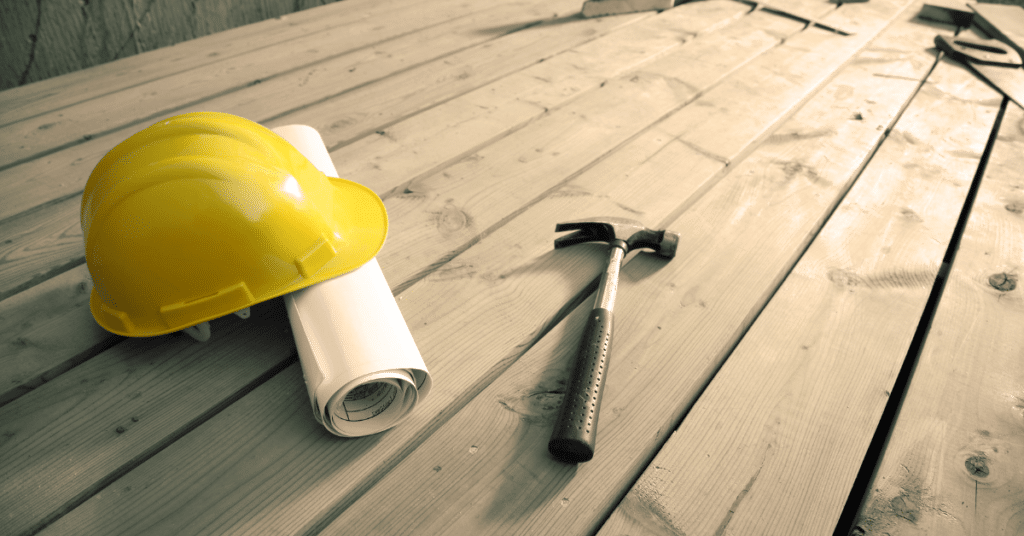
Routine Maintenance: A Shield Against Decay
Just like any prized possession, your deck demands regular attention to maintain its glory. Routine maintenance isn’t merely a chore; it’s the armor that guards your deck against the relentless march of decay.
- The Need for Regular Inspections: Regularly survey your deck, identifying telltale signs of wear, potential damage, or areas vulnerable to future issues.
- A Proactive Maintenance Schedule:
- Cleaning: Monthly sweeping and bi-annual deep cleaning can prevent the buildup of debris and staining.
- Damage Checks: Quarterly examinations for signs of wood splitting, rusting fasteners, or other damage can nip problems in the bud.
- Prompt Repairs: Addressing minor issues like loose boards or nails immediately can prevent larger complications down the road.
Your deck is more than wood and nails; it’s an extension of your living space and a treasury of memories. By committing to consistent maintenance, you ensure its luster endures, ready for many more sunrises, sunsets, and cherished moments.

Conclusion
Deck longevity hinges on meticulous attention to detail, right from construction to maintenance. Factors like proper board spacing, effective drainage, and the use of appropriate fasteners are paramount. Being proactive in routine care can ward off many potential issues, from moisture-induced rot to structural weaknesses.
As stewards of our outdoor spaces, it’s incumbent upon us to ensure they stand the test of time. Assess your deck, be vigilant to its needs, and take the necessary steps to prevent premature decay. After all, a well-maintained deck is more than just wood and nails; it’s a legacy of cherished outdoor memories.











